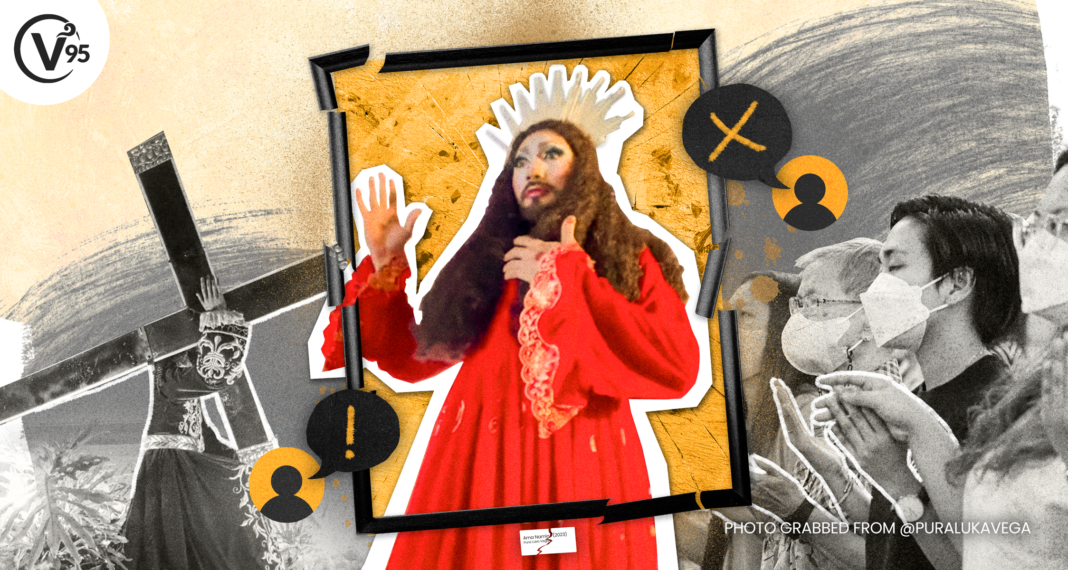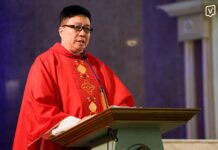“AMA NAMIN (Our Father)” is a prayer, not a work of art, and must be accorded respect and reverence, several theology professors said as they lambasted a drag performance of the Lord’s Prayer that drew mixed reactions online.
Former “Drag Den Philippines” contestant Pura Luka Vega danced to a rock remix of “Ama Namin” while wearing the garments of the image of the Black Nazarene. The post went viral on July 10, to the consternation of public figures, including senators.
UST theology professor Revenendo Vargas told the Varsitarian that the Lord’s Prayer should not be used for artistic means because of its religious importance among the Catholic faithful.
“The ‘Ama Namin’ is an expression of faith taught by Christ himself. It is a prayer! This is not art [nor] an interpretation but a direct expression of words on how we come to the Father,” Vargas said.
“It is an acknowledgment of God’s glory, provenance, and of our nothingness, asking forgiveness for our sins, thereby demanding reverence,” he added.
Like the Philippine flag, the Lord’s Prayer demands the same respect as cultural symbols, said another UST theology professor, Leo-Martin Angelo Ocampo.
“In the internet today, our sense of boundaries and common decency when it comes to humor has become more blurred,” he told the Varsitarian. “We should recover not only our sense of respect for sacred things but also our sense of respect in general.”
“If we demand respect for cultural symbols, such as our flag, the same respect should be accorded at the very least to religious symbols that people hold very dear,” he added.
On July 13, Catholic Bishops’ Conference of the Philippines spokesperson Fr. Jerome Secillano described Luka’s performance as “blasphemous” and “bordering on the profanity.”
Luka defended the performance as an “acceptable form of worship to bring everyone into God’s presence.”
“I understand that people call my performance blasphemous, offensive or regrettable. However, they shouldn’t tell me how I practice my faith or how I do my drag,” the drag performer wrote in a Twitter post on July 13. “That performance was not for you to begin with. It is my experience and my expression, of having been denied my rights.”
For Joseph Albert Reyes, a UST theology instructor, artistic expression and gender identity should be “contextualized responsibly” to avoid misinterpretations such as disrespecting Church practices.
“The drag performance became a channel of abuse of freedom of expression and offended the sensibilities of the faithful,” Reyes told the Varsitarian. “People should understand the history and context of drag and its difference from impersonation.”
“The drag performance became a channel of Pura Luka’s performance [that] caused damage in the community instead of creating unity among Christians,” he added.














